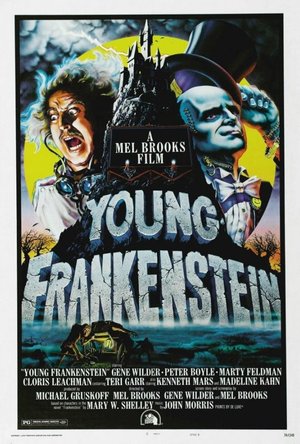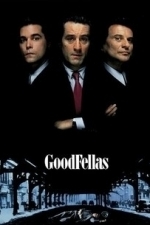
Touch Retouch: Blur Photo Edit
Photo & Video and Entertainment
App
Touch Retouch - The power of simple Instagram photo retouching for everyone, anywhere. This free...

Hawk (Perfect Stats #3)
Book
Hawk thought he had everything he wanted until Lexington Waters showed up. That’s when he...
Contemporary Sports Erotic Romance

I'm Not Dying With You Tonight
Kimberly Jones and Gilly Segal
Book
"An absolute page turner, I'm Not Dying with You Tonight is a compelling and powerful novel that is...
Gareth von Kallenbach (980 KP) rated Call of Duty: Infinite Warfare - Absolultion in Video Games
Jun 19, 2019
The maps are as follows…
Ember
This is a remake of the classic map “Resistance” From the castle lined landscape to the close-quarters fighting in rooms like gallows or a torture area this is a great map for those looking to run and gun.
Bermuda
This is a fun map based on a Shanty Town fishing village. There are locales ranging from a Fish Market to a Lighthouse and the mix of colors and action make this one really enjoyable.
Permafrost
This is a frozen landscape set in the ruins of a city. The map has several open areas where players can attack from above thanks to holes in the roof and streets. The debris strewn map offers plenty of cover but also numerous places for enemies to attack from all angles.
Fore
This is a large map that is so much fun to play. Set in a mini-golf course, players can run into the arcade, putting areas, and props to attack the enemy. There is plenty of cover and also terrain that is uneven giving a new and diverse set of challenges to players.
While the new maps are lots of fun, the main draw of the collection was the latest chapter in the Zombie mode where four aspiring actors are drawn into actual horror films by a demented Director.
The previous chapters have given us an 80s theme park, a 90s Summer Camp, and a 70s Disco Infused Martial Arts setting. This time out, Attack of the Radioactive things lets players play with and interact with Elvira in a 1950s Atomic Monster setting. The mode starts in Black and White before moving to color and even allows for a red tint Chroma mode.
Of course waves of Zombies and other terrors await and players must run and fight to survive.
This has been another winning collection for Infinite Warfare. While it does not offer anything radically new or different, it does offer plenty of fun and will increase your enjoyment of the game.
I am looking forward to seeing the final pack, around October ahead of the new Call of Duty: World War 2.
http://sknr.net/2017/08/13/call-duty-infinite-warfare-absolution-dlc/
BankofMarquis (1832 KP) rated Young Frankenstein (1974) in Movies
Apr 20, 2020
Such is the case with Mel Brooks' Universal Horror film spoof/satire YOUNG FRANKENSTEIN from 1974. It is a work of comedic genius and features some of the most memorable characters in motion picture comedy history.
Co-Writen by Brooks and Gene Wilder, Directed by Brooks and starring Wilder, Marty Feldman, Peter Boyle, Teri Garr, Cloris Leachman and the great Madeline Kahn, this film sends up the black and white Universal Horror films of the 1930's not by making fun of them, but by lovingly recreating them and then exaggerating the scenes/circumstances.
Wilder is at his manic best as Dr. Frederick Frankenstein - the grandson of the original Frankenstein - who is brought to Transylvania and soon takes up his grandfather's work. He works through a controlled rage throughout the film until such times where the rage (and his hair) comes bursting forth in maniacal energy that is a comic tour-de-force.
He is surrounded by an outstanding collection of misfits, most notably Marty Feldman's servant/assistant Igor who is game for just about anything. Under-rated is the comedic performance of Teri Garr as Frankenstein's lab assistant Inga who not only has good looks ("what knockers") but can hold her own with Wilder and Feldman in a scene. Peter Boyle is earnest and scary and vulnerable (all at the same time) in his portrayal of "the Monster" who just wants to be understood - the "Puttin' on the Ritz" scene shows some fine comedic chops in an actor that up to this point had not really done comedy (his Emmy nominated work in EVERYONE LOVES RAYMOND is years in the future).
But it is the work of 2 female comediennes that drives this film to another level. Madeline Kahn as Frederick's fiance, Elizabeth, commands (and steals) every scene she is in while the inscrutable Cloris Leachman is deadpan perfection as castle housekeeper Frau Bleucher (horse whinny).
Director Brooks keeps the jokes coming at a fast a furious pace, but keeps the pace and the story going as well. This is much more than "just a collection of jokes" - it is a very good movie.
This film falls squarely in my "Top 10 All Time Favorite Films" - and my #1 comedy of all time.
Letter Grade: A+
10 stars (out of 10) and you can take that to the Bank(ofMarquis)
Mel Rodriguez recommended GoodFellas (1990) in Movies (curated)

Montage photo and video Best!
Photo & Video
App
This is a powerful photo editor and powerful stop-motion tools which we created because we wanted a...
Emma @ The Movies (1786 KP) rated The Lighthouse (2019) in Movies
Nov 7, 2019
This won't be like any of my other reviews because honestly I'm mainly done with this film.
There's no denying that the look of the film was amazing and it captured an "authentic" oldie feel. The film was shot in 1.19:1 ratio which left you with an almost square frame. I have no problem with that as an idea but it's not like the rest of the screen disappears, if it was shown on that sized screen then fine but it's not, it's shown on modern wise screen and it's distracting.
Dafoe gave nothing less than you'd expect, though I don't know if I was sad or relieved to learn that they added his farts in post. Pattinson, despite that accent, gave a good performance and I honestly never thought I'd say that out loud.
Despite these great performnces I couldn't have cared less about the story and anything that happened. I'd say it felt pretentious but I really feel like this was a short that somehow got away with itself.
Two final things:
A24 have not managed to change my love/hate relationship with their movies.
Pattingson as Winslow does something that I think everyone in Bristol has thought about doing at least once with a seagull.
What you should do
I imagine you're all going to watch it regardless of what I say.
Movie thing you wish you could take home
You can take anything you want about this film, I don't want it.

The Awakening of H.K. Derryberry: My Unlikely Friendship with the Boy Who Remembers Everything
Book
The Awakening of HK Derryberry is the inspiring story of how one man was willing to step out of his...

The Awakening of HK Derryberry: My Unlikely Friendship with the Boy Who Remembers Everything
Book
The Awakening of HK Derryberry is the inspiring story of how one man was willing to step out of his...



